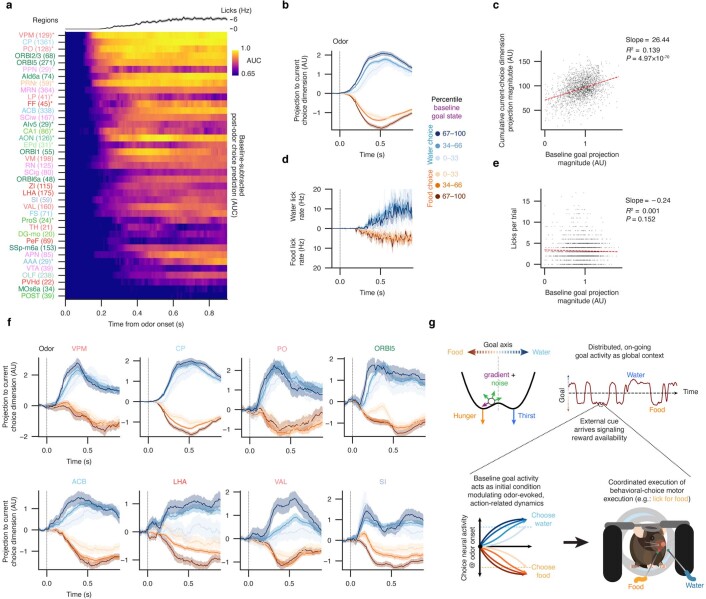Extended Data Fig. 11. Goal-related activity at baseline influences regional choice activity after Go-odor onset.
We found that persistent goal-related information is widely distributed across the brain and precedes external cues of reward availability. However, after odor onset, distinct population activity patterns arise that further differentiate Go vs. No-Go odors and choices of food vs. water (Extended Data Fig. 3). Here, we explore the relationship between distributed goal-related neural activity and regional odor-evoked activity dynamics by 1) examining activity that distinguishes food vs. water choices after Go-odor onset (we term hereafter as “current choice activity”) across different brain regions and 2) interrogating whether current choice activity might be influenced by the baseline goal-related activity prior to odor onset. a, Performance of baseline-subtracted regional population activity for predicting choice after Go-odor onset, evaluated per time-bin (AUC). Brain regions are sorted according to the first time-bin in which AUC reached half-max (0.75). Top, average lick rate across all trials and sessions post-odor onset. Mean, solid line; ± 95% confidence interval, shaded area. Region labels are color-coded according to the Allen Brain Atlas regional taxonomy and colormap (Extended Data Table 1). Note that we used baseline-subtracted regional population activity to predict choice after Go-odor onset in order to remove the influence caused by the fact that baseline population activities in different regions contain different amount of information about upcoming choice (Fig. 2e). The earliest regions gained increased predictiveness over baseline at least 100 ms before the average onset of licking; these regions could play a functional role in finalizing behavioral choices or in initiating choice-specific motor plans. Some of the earliest regions, including the orbital frontal cortex (OFC) and caudoputamen (CP), have been previously described as playing roles in value-guided decision making71–73. Cell numbers are in parentheses. Regions with fewer than 15 cells were excluded from the analysis. b, Because individual cells have mixed selectivity between goal-, odor-, and action-related factors (Extended Data Fig. 3), we hypothesized that population variation along the goal axis at baseline (pre-odor) could predict variation in baseline-subtracted current choice activity dynamics. We therefore analyzed within choice variation in the projection of baseline-subtracted population neural activity onto a dimension that separates food from water choices in the response period (1–2 s post-odor), as a function of the magnitude of the population projection along the goal axis (1 s pre-odor epoch, predictive of upcoming choice). Projections for water choices (blue lines) and food choices (orange lines) are binned into percentile subsets based on per-trial baseline variation along the goal dimension. Bin mean, solid line; ± 95% confidence interval, shaded area. Vertical dashed line, odor onset. c, Per-reward-trial relationship between condition mean-subtracted, baseline goal-related activity and baseline-subtracted current choice activity magnitudes. Baseline-subtracted activity projected along the current choice dimension is summed from 100 ms – 900 ms after odor onset (y-axis). Dots, individual trials. Dashed red line, linear fit, indicating a significant correlation between fluctuations along the goal dimension at baseline and subsequent choice dynamics. d, e, Unlike the current choice activity, within-choice variation in baseline goal activity had no effect on the timing or intensity of licking towards food or water. This suggests that, while variation in the baseline goal-activity within choices may alter odor-evoked neural dynamics in the brain, the behavior that ultimately results is categorical and has consistent timing regardless of variation in population goal activity. n = 7 mice, 7 sessions (b–e). Since different brain regions have different upcoming and current choice activity time-courses and dynamics (a), we next analyzed whether individual regions might exhibit distinct patterns of modulation by baseline goal activity. f, Projections of baseline-subtracted neural activity onto the current choice dimension following odor onset (vertical dashed line) for 8 selected regions, analyzed and visualized as in (b). Top row, example regions whose baseline-subtracted current choice activity has faster onset dynamics for either food or water choices with high baseline goal activity magnitude vs. trials with low baseline goal activity magnitude. Notably, these regions had some of the earliest onset of choice predictiveness beyond baseline (a). Bottom row, example regions whose baseline-subtracted current choice activity is modulated by baseline goal activity late in the response period. Regions with fewer than 10 recorded cells per session were excluded from the analysis. The different time courses of modulation of regional current choice activities suggest that baseline goal-related information may influence distinct brain functions related to choice—for instance, combining goal state with information about reward availability to finalize response selection (occurring rapidly after odor onset), or adding goal context to execution and reward-related activities (occurring during licking and reward collection). g, In summary, ongoing baseline goal-related population activity (top) may function as an initial condition that shapes odor-evoked dynamics (bottom left), coordinating regional dynamics such that appropriate behaviors emerge (bottom right) despite conflicting needs. For all regional analyses (a, f), see Extended Data Table 1 for number of animals and sessions used.

